Exploring the Human Body with Busy Things
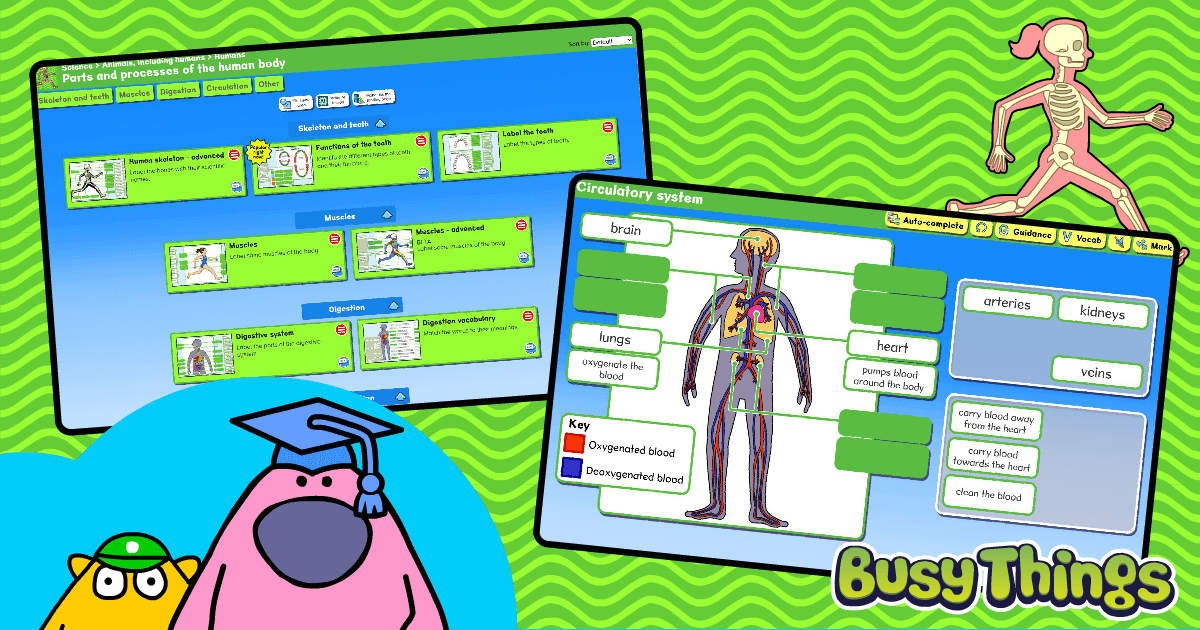
The human body comes in lots of different shapes and sizes but most people’s are made up of the same parts doing the same jobs. It’s great fun discovering how they work and finding out just how amazing they are at protecting us and helping us grow and move around.
To help your 7-11-year-old pupils learn more about the human body, its parts and processes, Busy Things has recently created some new and exciting activities. This blog will hone in on some of them as we journey through the body, starting with the skeleton, moving onto muscles, our internal body systems, then individual organs.
The skeleton
The skeleton gives the body its shape, protects our vital organs, and together with our muscles, helps us move.
Our Human skeleton interactive labelling activities put your pupils’ knowledge to the test.
The ‘Common names’ version is quite straightforward but how many of the scientific names in the Advanced version can your class name correctly?
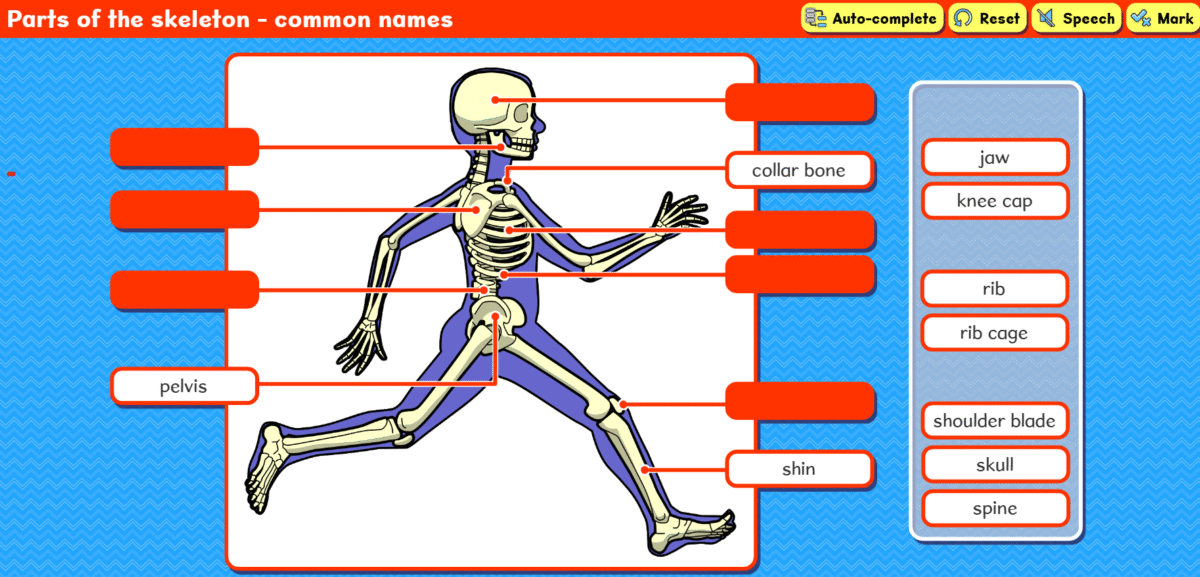
Our muscles
Muscles have many important functions in the human body. They support movement and help circulation.
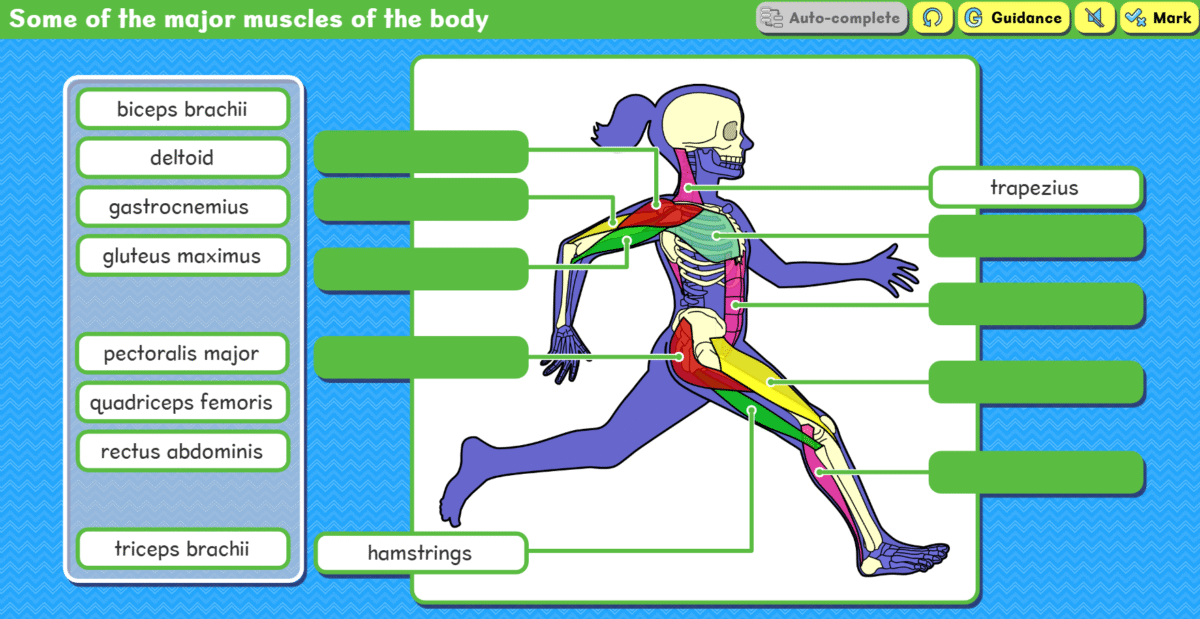
Our Muscles labelling activities test knowledge of the names of muscles and their location in the human body.
Similar to the skeleton activities, there is a Common names version and a trickier Advanced version.
The body’s systems
Once the children understand the basics of bones and muscles, it’s time to look at the body’s systems to understand how we breathe, make energy from food and transport the energy to where it’s needed. Busy Things provides a focused activity for each body system, giving detailed guidance for teachers and pupils to refer to. Each system also has an accompanying Vocabulary activity, which can be used to consolidate learning or as a lesson starter to help pupils’ recall prior knowledge.
The digestive system
The digestive system breaks down food so the body can absorb its nutrients and use them for energy and growth. The process starts the moment food enters the mouth, continues in the stomach, intestines and other organs and ends with the body excreting what it cannot use.
Our Digestive system labelling activity helps pupils name and locate the different parts of the process.
Want to simplify the process? Reduce the number of elements for your pupils to label via the Activity settings.
Want to see what the children are remembering? Set the activity as an Assignment. It will still be marked automatically but results will show in your area.
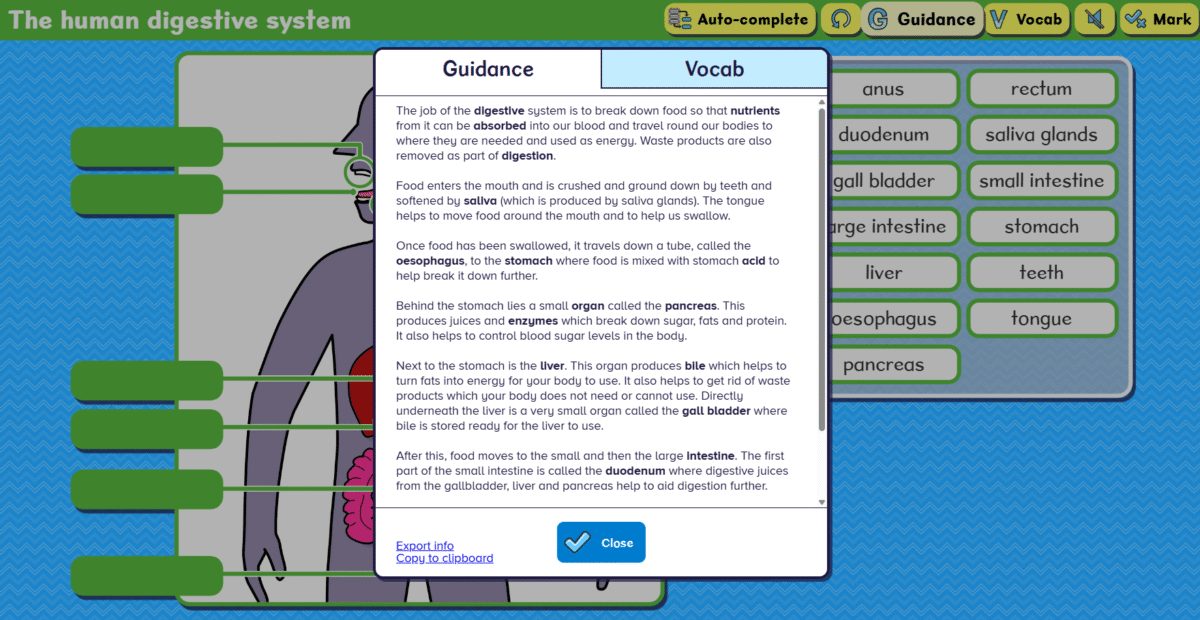
The circulatory system
The circulatory system is the body’s delivery network, carrying oxygen and nutrients around via blood. Pupils are often amazed to learn just how far their blood travels each day!
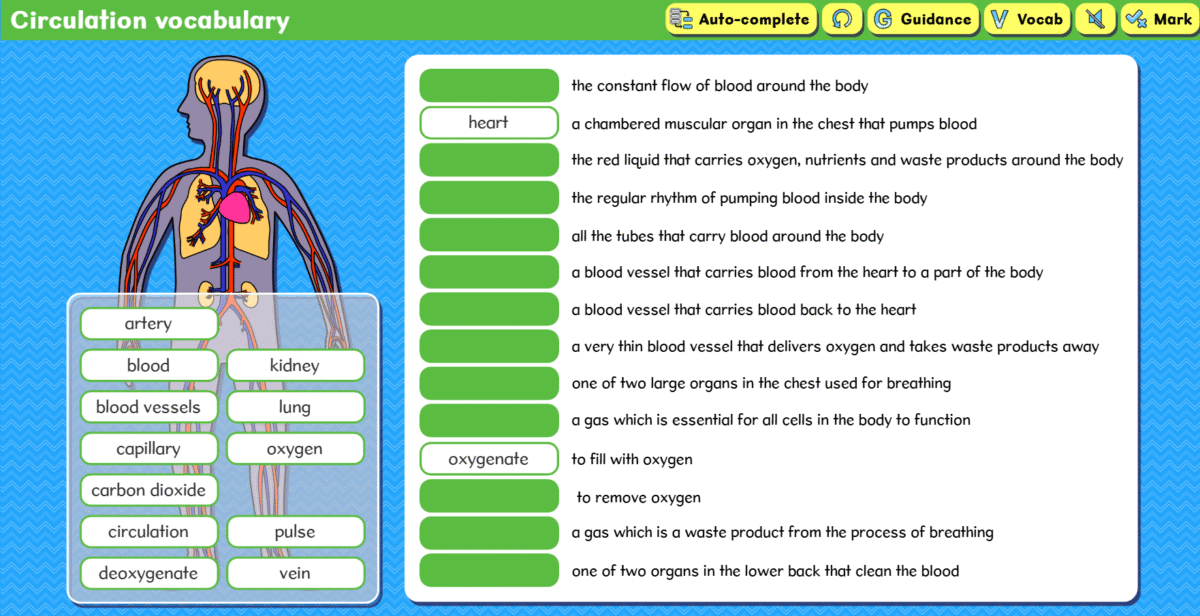
Each body system activity is accompanied by a vocabulary-based activity, like the Circulation vocabulary activity left.
Pupils drag and drop the terms beside their definitions and, when ready, can click Mark to see how they’ve done.
They can mark and re-mark their work as many times as they need.
Play the Circulatory system activity here!
The respiratory system
The respiratory system is all about breathing, the process of taking in oxygen and expelling carbon dioxide.
Like the other body systems, there’s a dedicated labelling activity and a Vocabulary activity.
Both types of activities have a Create printable tool, which allows you to make a worksheet of the content, complete with answer sheet, to use away from the computer!
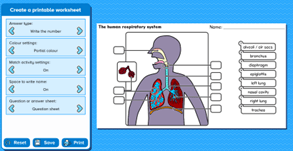
Specific organs
With the major bodily systems covered, it’s time to look at individual organs within the body. In this section, we put a spotlight on the heart, the teeth, eyes and blood.
The heart is central to life, pumping blood throughout the body without ever taking a break. Take a look at our interactive activity, where you can see the heart pumping!
Blood is vital for transporting nutrients around our bodies and fighting infection. Our activity looks at blood as you’d see it under a microscope. It reveals its component parts, which help our bodies fight disease and protect us if we accidentally cut ourselves.
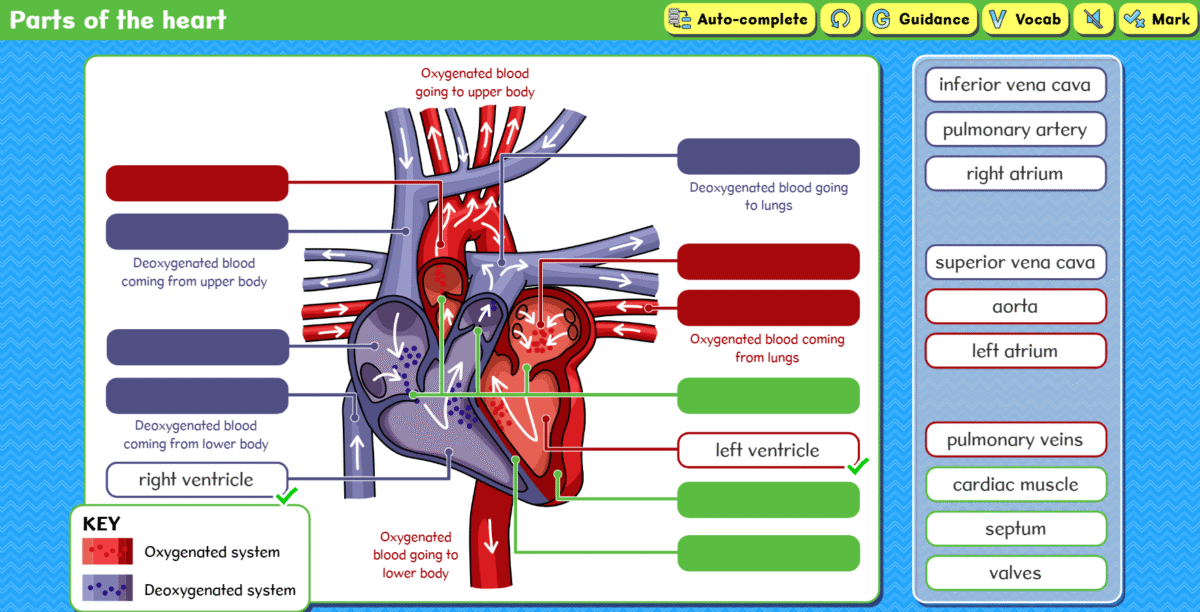
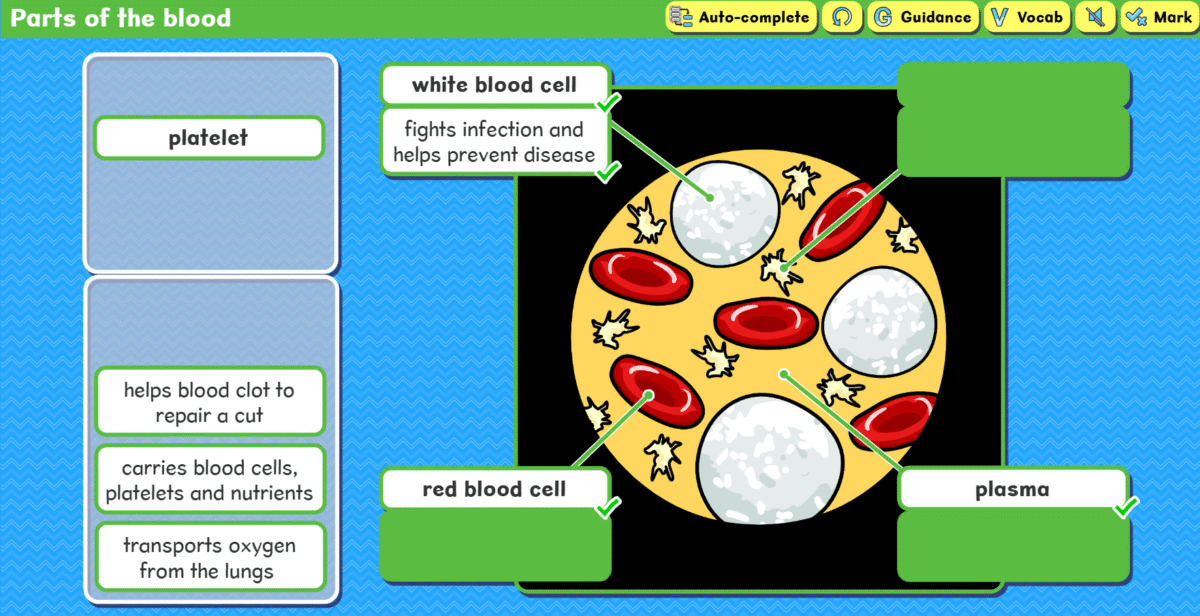
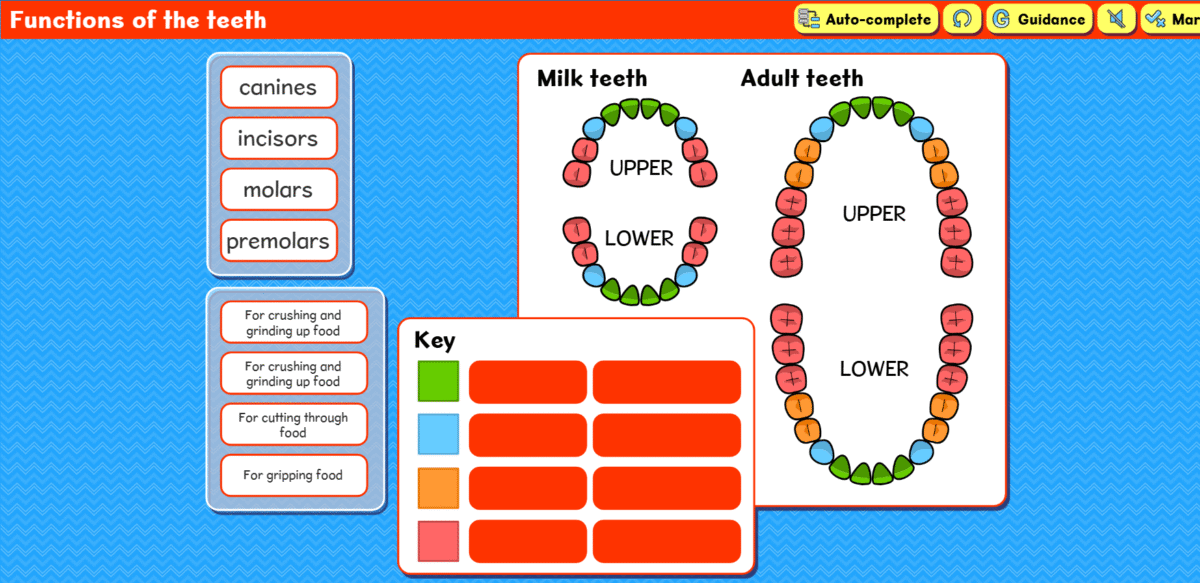
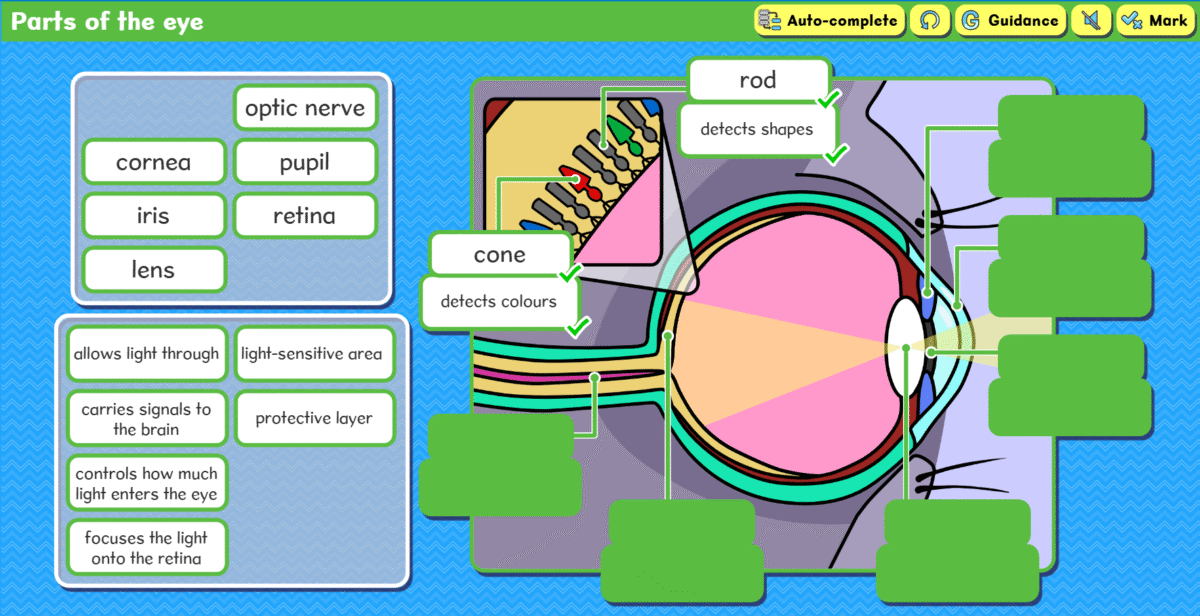
Teeth are very important for eating, and they come in different shapes and sizes because they have different functions to perform. Unlike our bones and heart, we can easily check our teeth. Regularly cleaning them helps to avoid fillings and keeps them healthy and strong.
Eyes are one of the body’s most complex organs. They help us take in light and colour, judge distance and notice details. Unlike other senses though, it’s clear we don’t all see the same. Some people need to wear glasses to see better, for instance; other struggle with 3-D images and/or colour.
Summary
We hope this blog post gives you some new ideas and resources to help you teach children about how amazing their bodies are. There are so many pieces working in unison to help us survive, move and interact with our surroundings.
Encourage pupils to notice what their bodies can do, to be curious and to appreciate differences between people. Some children may have strong upper body strength, for example, and be amazing on the monkey bars; others may be really co-ordinated, and able to catch a ball every time.
Whatever the differences, it’s important to remember that everybody’s body is different, but brilliant in its own way, which is a message worth celebrating in every classroom.
As part of the blog, we’ve given you free access to the Circulatory system activity. To see the other activities mentioned, and activities covering learning objectives from other areas of the curriculum, you’ll need to take a no-obligation free trial. This will give you a personalised login and 28 days to look around! No payment details are required.